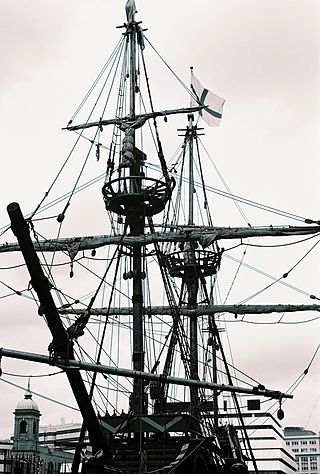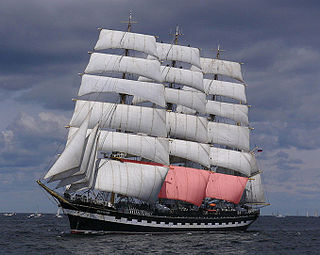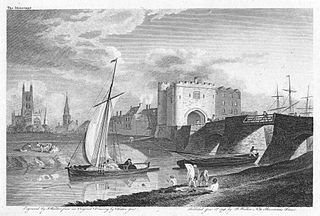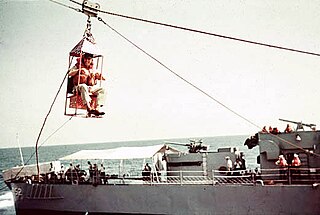
Rigging comprises the system of ropes, cables and chains, which support a sailing ship or sail boat's masts—standing rigging, including shrouds and stays—and which adjust the position of the vessel's sails and spars to which they are attached—the running rigging, including halyards, braces, sheets and vangs.

A sailing ship is a sea-going vessel that uses sails mounted on masts to harness the power of wind and propel the vessel. There is a variety of sail plans that propel sailing ships, employing square-rigged or fore-and-aft sails. Some ships carry square sails on each mast—the brig and full-rigged ship, said to be "ship-rigged" when there are three or more masts. Others carry only fore-and-aft sails on each mast, for instance some schooners. Still others employ a combination of square and fore-and-aft sails, including the barque, barquentine, and brigantine.

Sailing rigs describe the arrangement of sailing vessels' rig components, including their spars, rigging, and sails. Examples include a schooner rig, cutter rig, junk rig, etc. Rigs may be broadly categorized as fore-and-aft and square-rigged. They may incorporate a mixture of both categories. Within the fore-and-aft category there is a variety of triangular and quadrilateral sail shapes. Spars or battens may be used to help shape a given kind of sail. Each rig may be described with a sail plan—formally, a drawing of a vessel, viewed from the side.

A dinghy is a type of small boat, often carried or towed by a larger vessel for use as a tender. Utility dinghies are usually rowboats or have an outboard motor. Some are rigged for sailing but they differ from sailing dinghies, which are designed first and foremost for sailing. A dinghy's main use is for transfers from larger boats, especially when the larger boat cannot dock at a suitably-sized port or marina.

Galleons were large, multi-decked sailing ships first used as armed cargo carriers by European states from the 16th to 18th centuries during the age of sail and were the principal vessels drafted for use as warships until the Anglo-Dutch Wars of the mid-1600s. Galleons generally carried three or more masts with a lateen fore-and-aft rig on the rear masts, were carvel built with a prominent squared off raised stern, and used square-rigged sail plans on their fore-mast and main-masts.

A mooring is any permanent structure to which a seaborne vessel may be secured. Examples include quays, wharfs, jetties, piers, anchor buoys, and mooring buoys. A ship is secured to a mooring to forestall free movement of the ship on the water. An anchor mooring fixes a vessel's position relative to a point on the bottom of a waterway without connecting the vessel to shore. As a verb, mooring refers to the act of attaching a vessel to a mooring.

Standing rigging comprises the fixed lines, wires, or rods, which support each mast or bowsprit on a sailing vessel and reinforce those spars against wind loads transferred from the sails. This term is used in contrast to running rigging, which represents the moveable elements of rigging which adjust the position and shape of the sails.

A traveller is a part of the rigging of a boat or ship that provides a moving attachment point for a rope, sail or yard to a fixed part of the vessel. It may take the form of anything from a simple ring on a metal bar or a spar to, especially in a modern yacht, a more complex "car" – a component with bearing-mounted wheels running on a shaped aluminium extrusion.

A mainsail is a sail rigged on the main mast of a sailing vessel.

A trow was a type of cargo boat found in the past on the rivers Severn and Wye in Great Britain and used to transport goods.

Running rigging is the rigging of a sailing vessel that is used for raising, lowering, shaping and controlling the sails on a sailing vessel—as opposed to the standing rigging, which supports the mast and bowsprit. Running rigging varies between vessels that are rigged fore and aft and those that are square-rigged.
A spar is a pole of wood, metal or lightweight materials such as carbon fibre used in the rigging of a sailing vessel to carry or support its sail. These include yards, booms, and masts, which serve both to deploy sail and resist compressive and bending forces, as well as the bowsprit and spinnaker pole.
This glossary of nautical terms is an alphabetical listing of terms and expressions connected with ships, shipping, seamanship and navigation on water. Some remain current, while many date from the 17th to 19th centuries. The word nautical derives from the Latin nauticus, from Greek nautikos, from nautēs: "sailor", from naus: "ship".

Stays are ropes, wires, or rods on sailing vessels that run fore-and-aft along the centerline from the masts to the hull, deck, bowsprit, or to other masts which serve to stabilize the masts.

Capsizing or keeling over occurs when a boat or ship is rolled on its side or further by wave action, instability or wind force beyond the angle of positive static stability or it is upside down in the water. The act of recovering a vessel from a capsize is called righting. Capsize may result from broaching, knockdown, loss of stability due to cargo shifting or flooding, or in high speed boats, from turning too fast.
The nautical term "stay mouse" refers to an antiquated part of a sailing vessel's standing rigging. On all sailing ships built before about the 19th century, the stays were of natural cords. These lines were looped around the top of each section of the wooden masts using a spliced loop or seized loop in their ends. During the 16th century some riggers began to attach stays by splicing or seizing only a small loop into the end of the stay then passing the rope's tail around the mast and back through the small loop, like a slip-knot. To prevent this from slipping tightly around the mast when in use, a strong bulge was built into the standing part of the rope that could not fit through the small loop. This bulge was called a mouse or stay mouse.

A boom vang (US) or kicking strap (UK) is a line or piston system on a sailboat used to exert downward force on the boom and thus control the shape of the sail. The Collins English Dictionary defines it as "A rope or tackle extended from the boom of a fore-and-aft mainsail to a deck fitting of a vessel when running, in order to keep the boom from riding up".

Dismasting, also spelled demasting, occurs to a sailing ship when one or more of the masts responsible for hoisting the sails that propel the vessel breaks. Dismasting usually occurs as the result of high winds during a storm acting upon masts, sails, rigging, and spars. Over compression of the mast owing to tightening the rigger too much and g-forces as a consequence of wave action and the boat swinging back and forth can also be result in a dismasting. Dismasting does not necessarily impair the vessel's ability to stay afloat, but rather its ability to move under sail power. Frequently, the hull of the vessel remains intact, upright and seaworthy.

A jackstay is a cable or bar between two points to support and guide a load between those points, or as an anchor to attach something to be constrained along that line. The term is mostly used in a marine context and originated on sailing ships. Note the use of "stay" implies load bearing working rigging. In diving it is also a line to guide the movements of a diver between the endpoints.
This glossary of nautical terms is an alphabetical listing of terms and expressions connected with ships, shipping, seamanship and navigation on water. Some remain current, while many date from the 17th to 19th centuries. The word nautical derives from the Latin nauticus, from Greek nautikos, from nautēs: "sailor", from naus: "ship".















